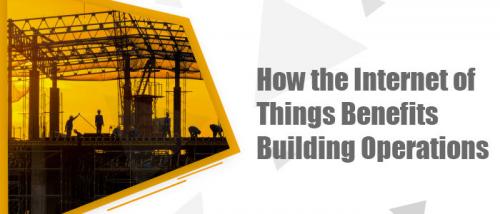How the Internet of Things Benefits Building Operations

Today, for facility managers, there is no
dearth of technology options. Whether it is the sophisticated building
management systems or the Internet of Things (IoT), these technologies help
facility managers get a secure flow of information. For most facility managers,
the wide range of possibilities that the IoT offers is the problem. They are
clueless from where to start with a smart building technology when IoT applications
are used for almost every building system. Some facility managers also fear
being replaced by automation. However, a facility manager’s expertise to lead a
team or to develop maintenance strategies can never be replaced by building
automation. It is there to make the lives of facility mangers easier and to
help identify potential risks that would be difficult to detect with the
traditional system of hands-on management.

IoT devices are able to deliver the right
information at the right time to the right person. This has not been earlier
possible with physical assets. In a layman’s language it is a network of
sensors, appliances and other devices that can send and receive data. To put it
in simpler words:
- A CO2 meter is able to calculate the number of people present in a room and direct the HVAC system to increase or decrease the ventilation rate
- An occupancy sensor can ask a light to turn on when there is a presence
- A dashboard can measure the worth of a building’s sensor data and turn them into actionable insights
This new facility management system generally tends to fall into the following categories:
- Energy: this includes on-demand applications like wireless power and energy monitoring
- Equipment: the ones that optimize the lighting and energy and HVAC use
- Air quality: applications or devices that are able to measure and filter out CO2
- People: the technology can also measure space utilization and occupancy and measure how many people have passed through a certain point
The primary benefits of the IoT are
observability and flexibility. To understand this, take a closer look at the
electricity bill you get every month. It will tell you how much power you used
and how much you owe but do you know where the money was exactly used? Getting
an insight into where your money was used for the energy consumption is most
probably one of the best ways that IoT helps you manage a building better and
understand where exactly the energy is getting consumed. Let us take a quick
look at how IoT as a facility management
solution is transforming building operations:
·
Service and repairing: sensors
installed in machines enable them to transmit information about the need for
any service or repair. Fixing a machine before it breaks always makes more
sense than waiting for it to breakdown, which too likely happens mostly at the
wrong times.
·
Remote monitoring: for any
equipment used by the users, the IoT allows these usage hours to be logged and
tracked automatically. The limits can be monitored which can also prevent any possible
accidents. For example, wearable computing in forms of wristbands can monitor
the health and alertness of a worker or an employee. Action can be quickly
taken if the limits of danger are crossed.
·
Power savings: with the help of
the IoT, building spaces can send back data regarding the amount of energy that
they have used. This way you can adjust the after-work hours lighting to help
in energy savings. Machines can also send back information on idle hours. This
way on and off periods of particular projects can be adjusted without impacting
the quality of the projects where most of the time is spent to restart
machines.
·
Building Information Modeling
(BIM): computer models that were used for real-life construction work can now
be updated by sensors and used in the building spaces. These sensors can send
you information about how climate changes and time is affecting certain aspects
of your building on the whole. They can send you information about some changes
in energy efficiency in roofing. They will also tell you how the
infrastructure of your building behaves when there are tremors or natural
calamities.
·
Equipment tracking: with the
help of IoT, you are able to track any equipment located on any floor or space
of your facility. This saves you the time to physically check and track
equipment during emergencies, you are able to identify emergency equipment,
emergency exits, and access the floor plans in seconds. This not just saves you
time but also keeps you better prepared for emergencies.
The IoT, as the experts say, is the new way
to solve all the old problems related to facility management and building
operations. Its range of applications is vast and the construction and building
management sector are seen to quickly adapt to this new technology.
Post Your Ad Here
Comments